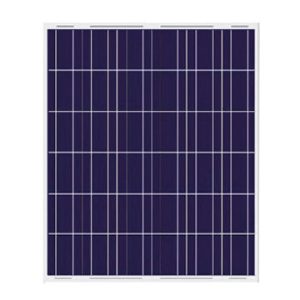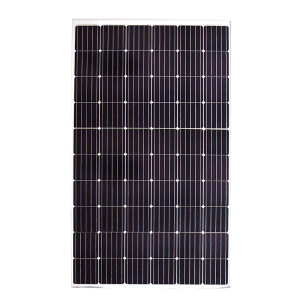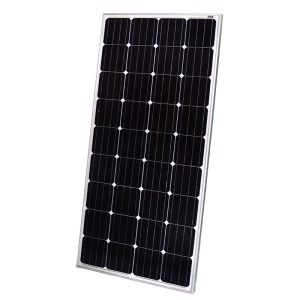As the world transitions towards sustainable energy sources, solar power has emerged as a game-changer, offering a clean and renewable solution to meet our ever-growing energy demands. Among the various solar panel options available, the 250 kW solar panel system stands out as a powerful and efficient choice for commercial, industrial, and large-scale residential applications. In this comprehensive guide, we will delve into the exact dimensions of these solar panels, exploring their physical characteristics, energy output, and potential applications.
Understanding Solar Panel Dimensions
Before we dive into the specifics of the 250 kW solar panel system, it’s essential to understand the fundamental components of a solar panel and how they contribute to its overall size and dimensions.
Solar Cells: The Building Blocks
The basic building blocks of a solar panel are individual solar cells, typically made of silicon. These cells are responsible for converting sunlight into electrical energy through the photovoltaic effect. Solar cells are arranged in a grid-like pattern and connected in series to form a solar panel.
Solar Panel Structure
A solar panel consists of several layers, including the solar cells, a protective glass cover, an encapsulant material to protect the cells from environmental factors, and a back sheet or frame for structural support. The combination of these components determines the overall dimensions of the solar panel.
The 250 kW Solar Panel System: A Powerful Solution
The 250 kW solar panel system is a large-scale installation comprising numerous individual solar panels connected in an array. This system is designed to generate a substantial amount of electricity, making it suitable for commercial and industrial applications, as well as large residential properties with ample space.
Panel Dimensions: Exploring the Options
The individual solar panels used in a 250 kW system typically fall into one of the following categories:
- 60-cell Solar Panels: These panels are the most common type used in residential installations. They measure approximately 39 inches wide by 66 inches long and have a depth of 1.3 to 1.6 inches .
- 72-cell Solar Panels: Slightly larger than the 60-cell panels, 72-cell panels measure approximately 39 inches wide by 77 inches long and have a similar depth of 1.3 to 1.6 inches .
- 96-cell Solar Panels: These larger panels are often used in commercial and utility-scale projects. They measure approximately 41.5 inches wide by 62.6 inches long and have a depth of 1.38 inches .
It’s important to note that the exact dimensions may vary slightly between manufacturers and panel models, but these measurements provide a general guideline for the most commonly used solar panels in a 250 kW system.
Energy Output: Harnessing the Power of the Sun
The energy output of a solar panel is typically measured in watts (W). The 250 kW solar panel system comprises numerous individual panels, each with an output ranging from 250 to 400 watts . By combining these panels in an array, the system can achieve a total output of 250 kilowatts (kW) or 250,000 watts, making it a powerful solution for large-scale energy generation.
Applications: Versatility in Sustainable Energy
A 250 kW solar panel system is suitable for a wide range of applications, including:
- Commercial and Industrial Buildings: Large office complexes, factories, warehouses, and other commercial facilities can benefit from the substantial energy output provided by a 250 kW system, reducing their reliance on traditional energy sources and lowering their carbon footprint.
- Utility-Scale Solar Farms: These large-scale solar installations are designed to generate electricity for distribution through the grid, and a 250 kW system can contribute significantly to the overall energy production.
- Large Residential Properties: While less common, some large residential properties with ample roof space or dedicated land areas may opt for a 250 kW system to meet their energy needs and potentially generate excess electricity for sale to the grid.
Calculating Solar Panel Requirements
To determine the number of solar panels required for a 250 kW system, several factors must be considered, including the panel’s wattage rating, the desired system size, and the available installation area. Here’s a general formula to calculate the number of panels needed:
Number of Panels = (Desired System Size in Watts) / (Panel Wattage Rating)
For example, if you’re using 320-watt solar panels and aiming for a 250 kW system, the calculation would be:
Number of Panels = (250,000 Watts) / (320 Watts per Panel) ≈ 781 Panels
It’s important to note that this calculation is an approximation, and the actual number of panels required may vary due to factors such as shading, panel orientation, and system losses.
Maximizing Solar Panel Efficiency
While the dimensions of solar panels are crucial, maximizing their efficiency is equally important to ensure optimal energy production. Here are some factors that can affect solar panel output:
- Solar Panel Structure: The composition, photovoltaic (PV) technology, and overall design of the solar panel can significantly impact its efficiency .
- Solar Irradiance: The amount of sunlight a location receives, measured in terms of solar irradiance, plays a crucial role in determining the energy output of a solar panel system .
- Local Climate: Factors such as temperature, humidity, and cloud cover can influence the performance of solar panels .
- Energy Demands: Understanding your energy consumption patterns and matching them with the solar panel system’s output can help optimize efficiency and reduce energy waste .
By considering these factors and implementing strategies to maximize solar panel efficiency, you can ensure that your 250 kW solar panel system operates at its full potential, providing reliable and sustainable energy for years to come.
Conclusion
The 250 kW solar panel system represents a significant investment in renewable energy, offering a powerful and efficient solution for commercial, industrial, and large residential applications. By understanding the exact dimensions of the individual solar panels used in these systems, as well as the factors that influence their efficiency, you can make informed decisions and maximize the benefits of this sustainable energy source.
Whether you’re a business owner, facility manager, or a homeowner seeking to reduce your carbon footprint, the 250 kW solar panel system is a viable option worth exploring. With the right planning, installation, and maintenance, this system can provide a reliable and cost-effective source of clean energy for decades to come.



